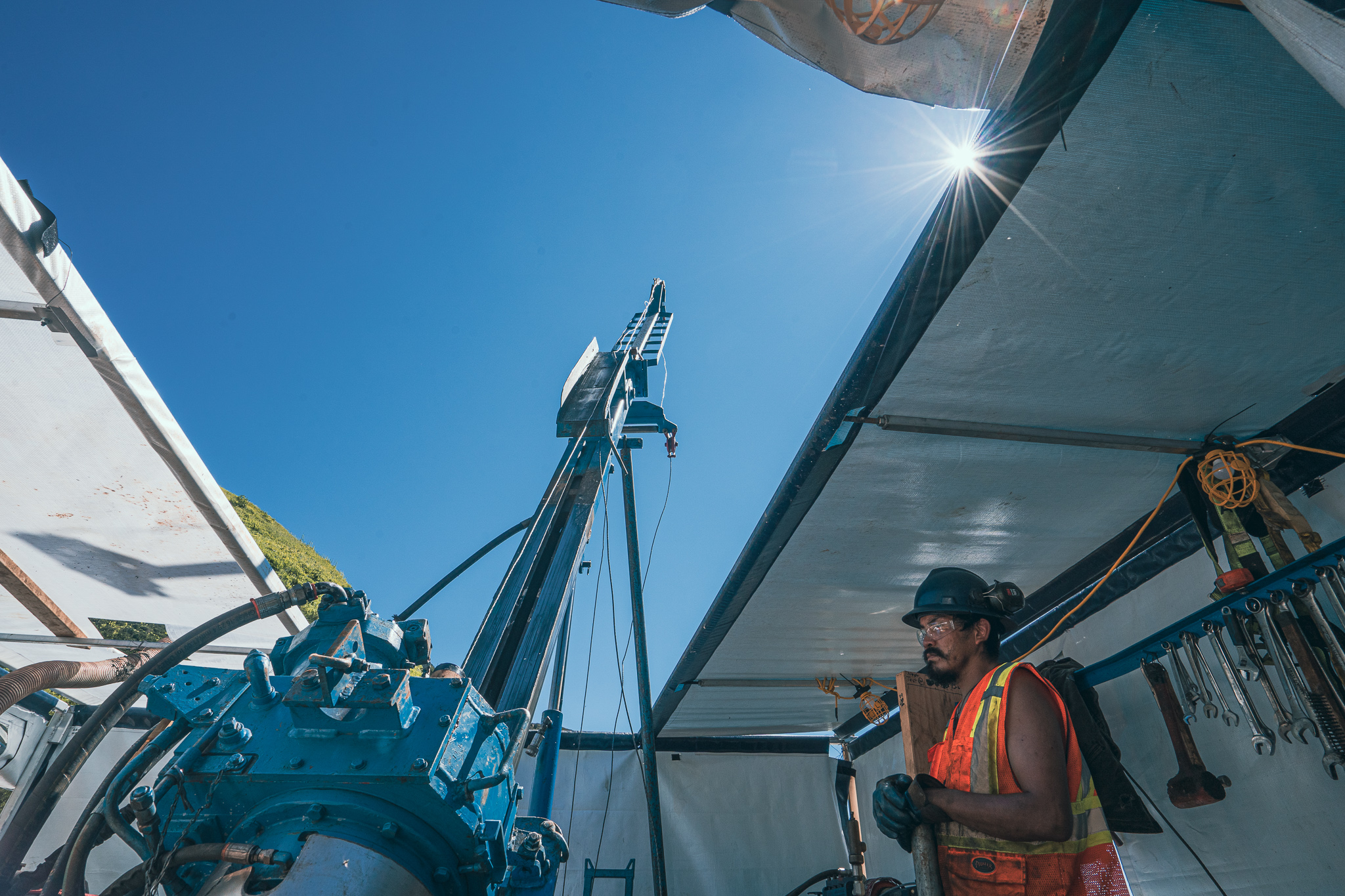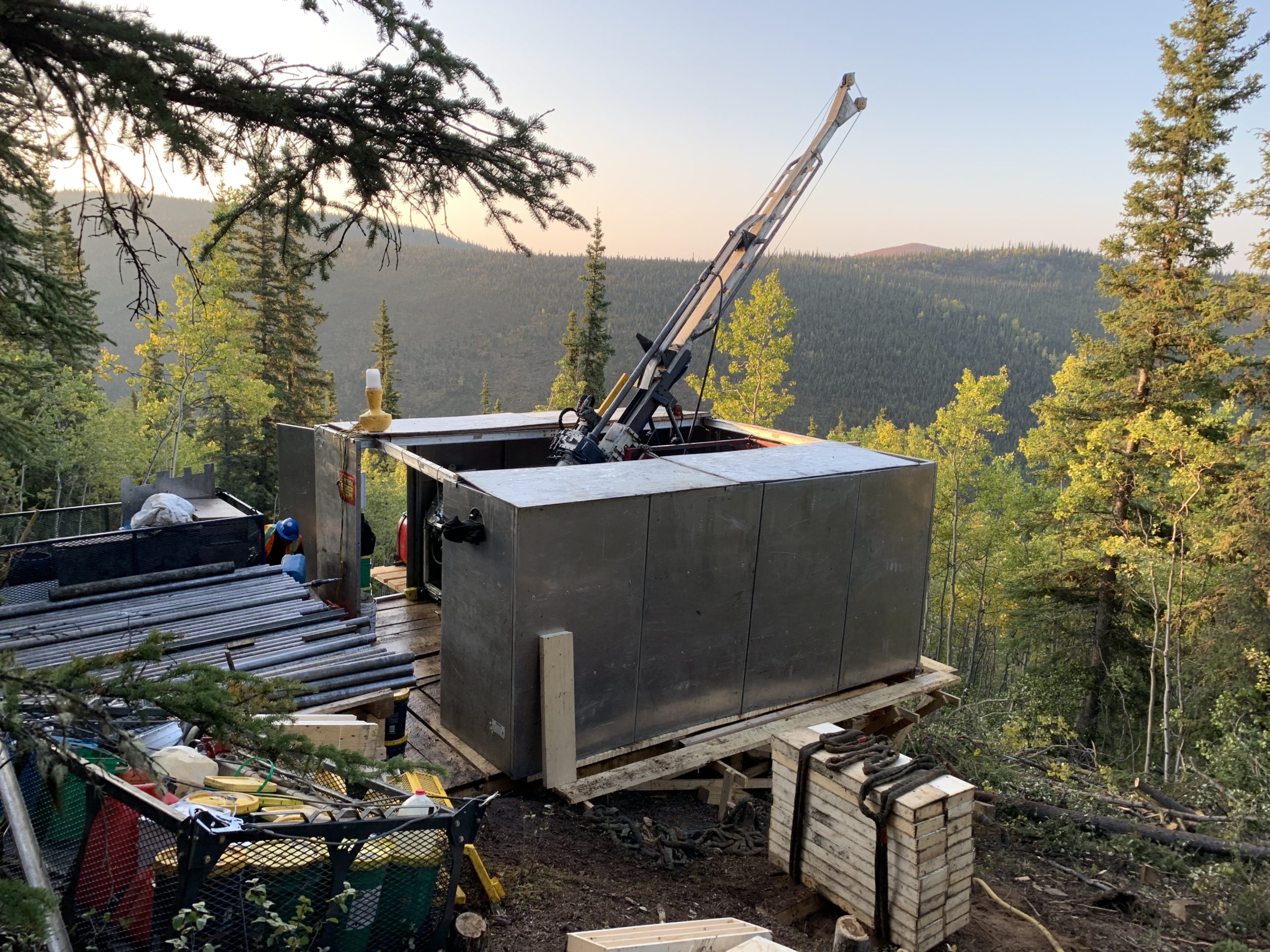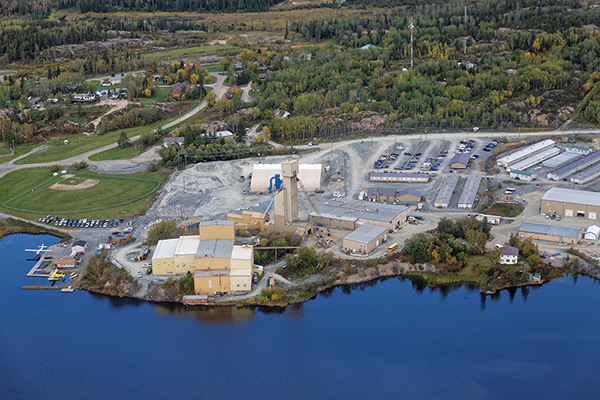Bold Gold
The word “detour ” is in Detour Gold Corporation’s name but it certainly wasn’t in its vocabulary when it came to building the Detour Lake Mine, located due south of James Bay, about 180 km northeast of Cochrane, and just 12 km from the Ontario/Quebec border.
By definition, “detour’” means (in part), “to avoid,” but Detour Gold avoided nothing when building what is being slated to become Canada’s largest gold mine. In the words of its Toronto-based owners, “Detour Lake is way up there” in the northwestern portion of the Canadian Shield where gold is prevalent and obstacles are many. But, with more than 15.6 million ounces of Proven and Probable gold reserves at stake, nothing was going to get in the company’s way of tapping into one of the larger gold finds in Canada.
In fact, even the 185-km, two-and-a-half hour trek along a paved (151 km) and gravel (34 km) road in from Ontario’s Highway 652, near Cochrane, didn’t discourage the thousands of contractors and other Detour Gold personnel who boldly made the journey to the place where some could possibly call “home” for at least the next 20 years.
At a pre-production capital cost of $1.5 billion, the new mine is expected to have an operating life of 21.5 years (for now) with an average annual gold production of approximately 657,000 ounces. Forecast for 2013 (with Q-1 being start of production) is for between 350,000 and 400,000 ounces.
For Detour Gold, the drive behind getting its Detour Lake project up and running has been a six-year commitment since it bought the property in January 2007. Like most mine sites, however, the Detour Lake property is not a totally new discovery because in fact, it’s the same place where an open pit and underground operation produced 1.8 million ounces of gold between 1983 and 1999.
The time between its closing in 1999, and when Detour Gold moved in eight years later, only one junior company did some drilling in the area of the former mine. Wanting to sell the property, they showed it to Gerald Panneton, CEO and founder of Detour Gold, who saw the potential for Detour Lake to be a high tonnage/low-grade deposit, and now the dream is reality – Detour Lake mine is back in production as a large open-pit operation.
The former operation closed as a result of a low gold price environment and the site was fully reclaimed by the original owners. After reviewing the project in the spring of 2006, Panneton was convinced that there was a multi-million ounce gold deposit within this large gold mineralized system that extended 300m wide and 2 km long. With strong financial support and a will to make it happen, work began to bring the once-unproductive mine back to life.
And today, that’s happened and the once-quiet site up near James Bay is bustling with activities as nearly 800 miners, contractors and other Detour Gold personnel change the landscape, both in terms of adding to the infrastructure of Ontario’s northwestern region, as well as providing jobs and other economic opportunities for local communities.
As already mentioned, the company avoided nothing when it came to getting its Detour Lake Mine up and running and company President and CEO Gerald Panneton says that thanks to a “very talented and dedicated group of individuals,” he estimates that over the first three years of operation, excluding 2013, the mine will generate over $1 billion in free cash flow.
And, with its average annual gold production projected at the 657,000 ounces mentioned above, the Detour Lake Mine will not only be Canada’s largest gold mine, but will also be among the largest gold operations in North America and one of the larger employers in Northern Ontario.
To make all of this happen, the company focussed on starting the open pit less than two kilometres west of the former open pit. Pre-stripping activities started in spring 2012, followed by the start of mining activities in a 50 to 150-m-wide mineralized zone, with a lower grade (0.8 to 0.9 g/t) than the average grade (1.03 g/t) of the mineral reserves.
This was done because it is wider and easier to provide ore production now (in 2013, the ramp up year) in order to sustain mine throughput. The company has stockpiled approximately 2.2 million tonnes of ore at an average grade of 0.7 g/t and 1.1 million tonnes of low-grade material (0.3-0.5 g/t).
By the end of December 2012, Detour Gold had mined more than 26 million tonnes
of material.
The pit itself will be approximately 3.3 km long and 1.2 km wide and 650 m deep. Berm widths range from 9.5 m to 12 m wide and the pit slope is 45 to 50 deg.
The ramp at surface is 35 m wide to handle two-way uninterrupted haulage cycles and complies with industry standards for the running width of a haul road to approximately three times the width of the largest equipment, not including additional room for a drainage ditch and safety berms.
At the bottom of the ramp near the pit’s bottom, the haul road is narrowed to single-lane traffic of 20 m and there’s a ramp gradient of 10% for the straight runs and 6-8% for curves sections. There’s also a 2% cross slope to help with drainage.
Equipment in the pit includes an initial mining fleet of 20 haul trucks (CAT 795F – 320 tonnes), two hydraulic shovels (CAT6060 – 28/34m3, two electric rope shovels (CAT7495 – 48m3, nine drills, and a variety of ancillary equipment to support the mining operation.
As the mine expands, so too will the fleet. It’s estimated that the open pit operation will require a fleet of 41 haulage trucks at the peak of its operation.
Naturally, mining the pit is a priority as work continues to make it deeper and wider but on the surface, the company has also been busy building a large processing plant that will eventually handle from up to 55,000 to 61,000 tpd by 2015.
It’s a conventional gravity, cyanidation and carbon-in-pulp facility initially operating at 55,000 tpd with an assumed availability of 92% for the first two years and increasing to 94% in year three.
The grinding circuit consists of two parallel lines, each having one twin-pinion, 36 ft x 20 ft SAG mill and one twin-pinion 36 ft x 40.5 ft ball mill. The four mills are all equipped with a pair of 7,500 kW variable speed drive motors.
Crushing capacity at the plant is enhanced by the inclusion of a large 60 in. x 113 in. 1,000 kW gyratory crusher coupled with two secondary crushers (XL-1100) and two pebble crushers (XL-1100) completes the plant’s crushing package.
A gravity feed circuit is fed by overflow from the ball mill that works in harmony with a cyclone sizing process as part of the overall gravity recovery circuit. Based on recent tests, the recovery of gold from the circuit is estimated to be between 30 – 40% for an average feed blend.
A cyanidation system designed at 99% is being used to process the gravity concentrate. After gravity recovery, gold leaching takes place in two parallel circuits composed of 10 large conventional leaching tanks each and when the plant gets up to 55,000 tpd, the retention time will be 29 hours, after which the slurry will then be pumped to two parallel carousel circuits for gold absorption onto activated carbon.
A stripping system uses a modified high-pressure process to recover the gold from the loaded carbon. The system is considered “modified” because Detour Gold’s engineers say the electrowinning is done “in line” with no retention tanks between stripping and electrowinning. The flow of solution is
split between six electrowinning cells and the refining equipment is designed to handle both the gold from the stripping circuit and from the gravity recovery system.
Detour Gold engineers say the electrowinning sludge is then filtered, dried, and mixed with fluxes before being smelted in induction furnaces.
And the end result is why the company came to Detour Lake in the first place. “Gold,” and that’s another word used is the company’s name.
In just six years, Detour Gold has transformed an abandoned mine site in a remote and environmentally hostile part of Ontario into one of the most promising mining operations in the entire country and while it still faces challenges and growing pains, the Detour Lake Mine holds great promise for its owners and the province, but moreover, for the mining industry in Canada as a whole because it once again proves to the world that Canadian miners take no detours when it comes to getting the job done.





Comments